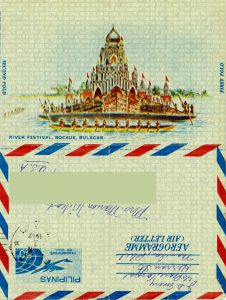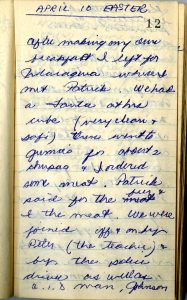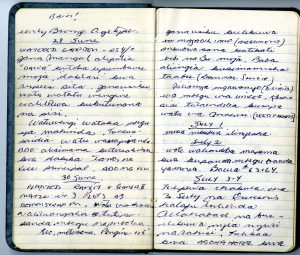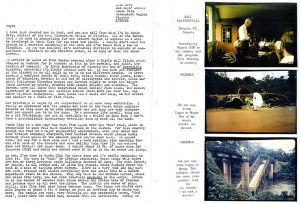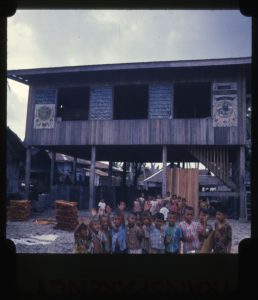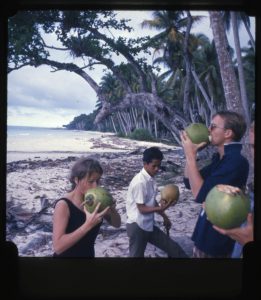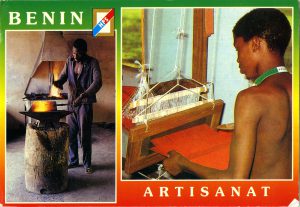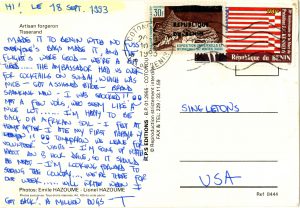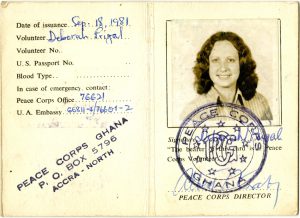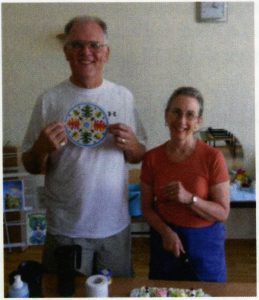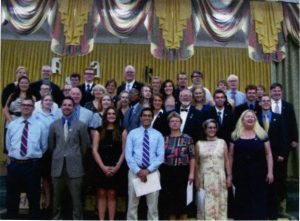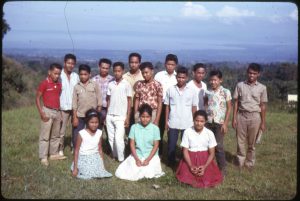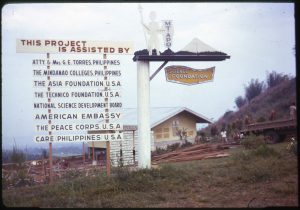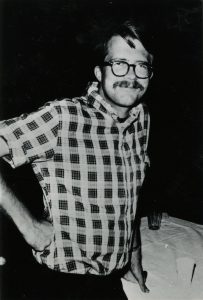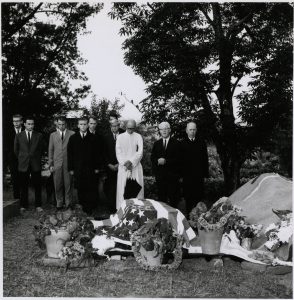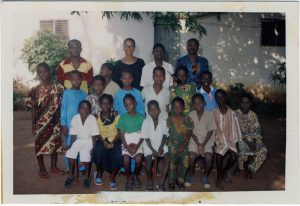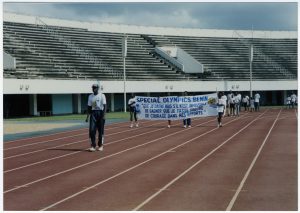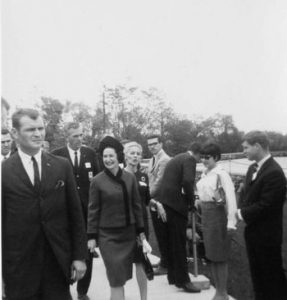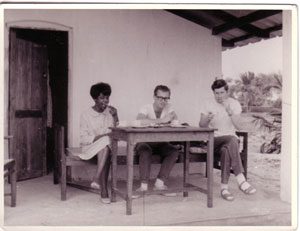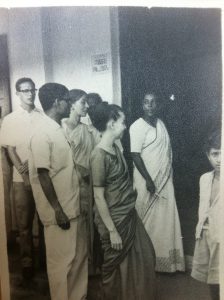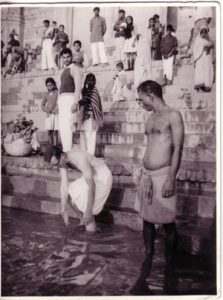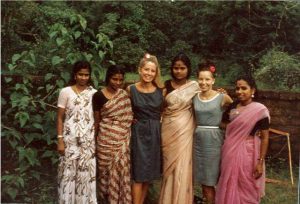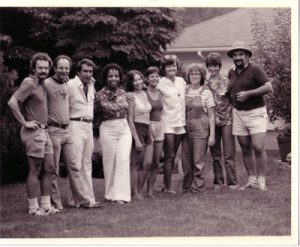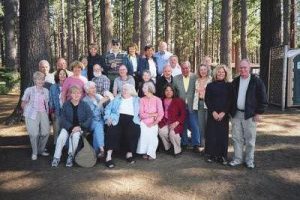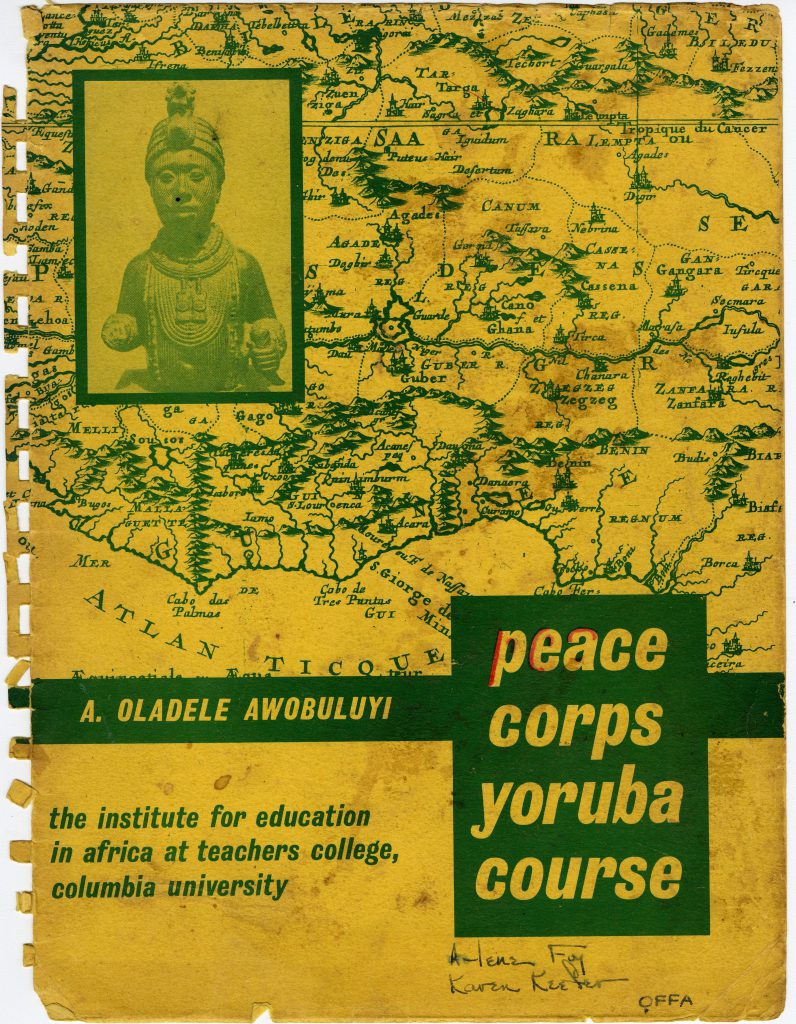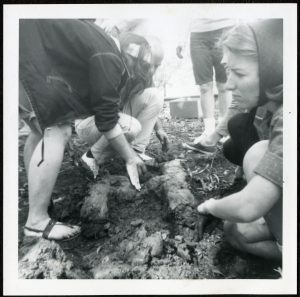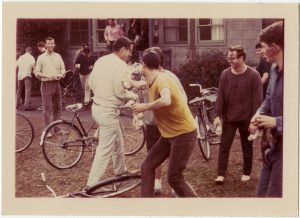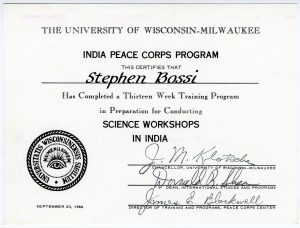The following post features an interview with Returned Peace Corps Robert Meade. Meade served in Paraguay from 1968-1969, and remained active in training future PCVs. In 2013, Robert Meade donated many of his Peace Corps materials to the Peace Corps Community Archive, including his correspondence, 35mm slides, training materials, reminiscences, and additional publications from his time in Paraguay. We thank Robert Meade for his time in answering our questions.

“Volunteer Robert Meade on the patio of the Hotel Terraza in Asuncion. The hotel was the unofficial Peace Corps home-away-from-home for Paraguay PCVs when they came to Asuncion from their posts.” PCCA
Q: What inspired you to enter the Peace Corps?
A: I was in high school when John F. Kennedy proposed and established the Peace Corps. The idea struck me as something I might want to do once I got through college. Like many people of that era, I was motivated by the idea of service to my country. I had an idealistic streak, too. My older brother was encouraging. He was close to people in the Kennedy administration and a backer of the Peace Corps from its beginning.

“Paraguay II PCV Vince Francia (far left) and PCV Bob Meade (center) at the health center in General Artigas with U.S. YMCA representatives and Paraguayan nurses and student nurses.” PCCA
Q: What surprised you most about your first few weeks outside the United States?
A: I think I was surprised by how little I really knew about the work I was supposed to do. My service involved work in rural public health and sanitation. I asked myself, “how I could play a useful role during my time in Paraguay?”
It all seemed a bit overwhelming at first. Even though the people I worked with were very friendly, they didn’t quite know how to deal with the whole notion of a “volunteer” who left behind a “rich” life in the US to live with them and help them improve their lives. Such altruism was very foreign to the Paraguayans.

“PCA Bob Meade and PCV Bob Caruso (P-III) play soccer with the shoeshine boys who frequented the area around the Peace Corps office in Asuncion. The volunteers “adopted” these boys and took them on excursions to parks, professional soccer matches, picnics, etc.” PCCA
Q: What projects did you work on during your Peace Corps service and what challenges did you face during their completion?
A: The principal focus of my work was public sanitation, especially the effort to control the parasitic hookworm among the general population in rural Paraguay. This involved projects aimed at providing clean water and the use of sanitary latrines (outhouses). I also educated people in basic hygiene such as washing hands, wearing shoes, and constructing latrines at their houses and schools. Fortunately, I had a Paraguayan counterpart who had a pretty good idea of how to attack these problems. One of the challenges we faced were the lack of financial and physical resources to carry-out our work. We also had to confront the basic ignorance of the population about preventing an endemic disease that was just part of life for many of them. Explaining the life cycle of the hookworm, an intestinal parasite, to a mainly illiterate population was no easy task.
We also had to confront the fairly ubiquitous presence of “curanderos” (witchdoctors) in rural areas who, because they sometimes prescribed an efficacious herbal remedy, had some credibility in the local population. Another challenge was transportation. We had to use my counterpart’s motorbike to get around or take public transportation and walk to many of the sites we had to get to. The problem of hauling equipment such as pumps and piping for wells had to be arranged. We had no budget for this purpose, nor did we have money to buy cement, bricks, wood, etc. to build latrines. This money problem was a constant struggle and, often, I used my PC living allowance to purchase supplies.

“PCV Bob Meade working in the garden at Kilometro 5.” PCCA
Q: How has your Peace Corps service influenced you in your post-Peace Corps work?
A: Despite the difficulties of Peace Corps service, my two years in Paraguay made me decide to pursue a career focused on Latin America and in public service of some sort. Immediately after Paraguay, I completed a Master’s Degree in Latin American studies at the University of Texas at Austin. I also worked for 15 months as a trainer for the Peace Corps in California and Puerto Rico.
In 1973, after having passed the written and oral exams, I joined the U.S. Foreign Service as a commissioned officer with the U.S. Information Agency (now part of the State Department). In this role, I worked for 23 years overseas and in Washington. I had assignments working in cultural and educational affairs in Panama, Ecuador, Brazil, Costa Rica, and Spain, with domestic tours for eight of those years.
My Peace Corps experience continued to serve me throughout my professional life. My experience gave me excellent command of the Spanish and Portuguese languages. I also gained an ability to work in foreign countries and develop meaningful relationships with people of different cultures while serving my country at the same time.
Q: What advice would you give current and future Peace Corps volunteers?
A: The Peace Corps experience is a very personal one, and how a volunteer reacts to an assignment and “fits in” varies greatly from person to person. I would recommend that you enter into service with an open mind. Do not have too many preconceived ideas about how things should be done. Remember that you are only “passing through” your place of service. In all probability, you will get a lot more out of the experience than you will leave behind. You will be a better person for having been a PCV. Lastly, bring back your new-found knowledge and perspectives to your fellow citizens.

